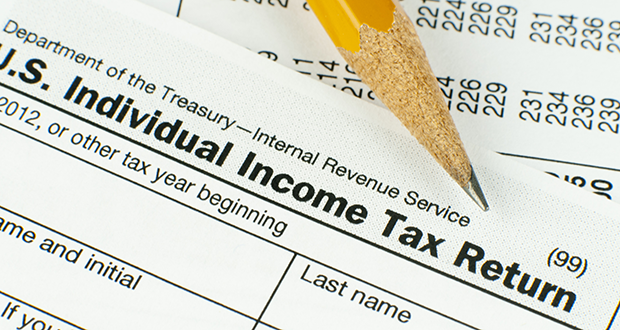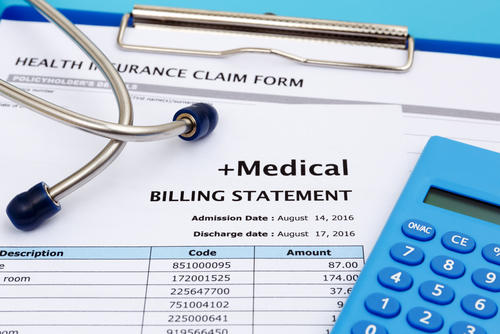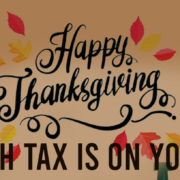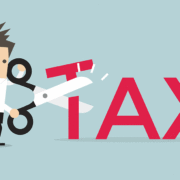California taxpayers get the Coronavirus tax extension on paying their taxes
/in BUSINESS TAXES, News, PERSONAL TAXES /by admin2019Due to the coronavirus, businesses and individual Californians taxpayers will get 90 more days to pay their taxes as long as its filed before April 15th, 2020.
Treasury Secretary Steven Mnuchin announced that his department is pushing back the April 15 tax deadline to pay taxes owed for many individuals and businesses, giving them 90 extra days to send checks to the government.
Individuals can defer up to $1 million of tax liability and corporations get an extension on up to $10 million, Mnuchin said on 03/17/2020.
What do you have to do to get your tax extension due to the Coronavirus / Covid-19 Pandemic 2020?
*File your 2019 taxes by April 15, 2020, and you will automatically not get charged interest or penalties.
We can help: CALL: 530-399-0989
Who does the Covid-19 Tax Payment extension 2020 affect?
 The coronavirus tax payment extension, which affects millions of taxpayers, is part of the Trump administration’s effort to curb the economic effects of the coronavirus pandemic. Mnuchin said the delay will free $300 billion of liquidity in the economy as individuals and businesses have more time to pay their taxes.
The coronavirus tax payment extension, which affects millions of taxpayers, is part of the Trump administration’s effort to curb the economic effects of the coronavirus pandemic. Mnuchin said the delay will free $300 billion of liquidity in the economy as individuals and businesses have more time to pay their taxes.
How to delay your tax payment due to the coronavirus of 2020 for your business or for personal taxes?
Delaying your tax payment due to the coronavirus requirements will give businesses and individuals nearly three more months to meet their IRS obligations, potentially lessening cash-flow issues that some businesses are facing as many people stay home and spend less money on dining out, entertainment and transportation.
Individuals and businesses will still have to file by April 15, unless they submit paperwork for an automatic six-month extension, Mnuchin told reporters.
Taxpayers who are Wealthy individuals — ranging from the upper-middle class to the top 1% — could benefit the most from this move because they are more likely to owe the government money and be able to wait until the filing deadline to submit their returns, said John Koskinen, a former IRS commissioner.
Taxpayers who are Lower-income workers — especially those who qualify for refundable tax breaks such as the child tax credit and the earned income tax credit, tend to file early because they get a refund check.
“The number of blue-collar workers, working-class people, I imagine, who are filing in the first two weeks of April is probably a very small percentage,” Koskinen said.
Many higher-income people, especially those who own a business or invest in multiple partnerships, apply for an automatic six-month tax extension to file because their returns are more complicated. In a typical year, they’d have to submit 90% of their tax liability on April 15 or face interest and penalties on the late payment.
The administration is also considering delaying the estimated quarterly tax payments that self-employed workers and businesses pay the IRS throughout the year, according to two people familiar with the matter. The first tax payment is typically due April 15, 2020.
For more in-depth information please visit: https://www.irs.gov/ or https://www.irs.gov/coronavirus
The IRS has established a special section focused on steps to help taxpayers, businesses and others affected by the coronavirus. This page will be updated as new information is available. For other information about the COVID-19 virus, people should visit the Centers for Disease Control and Prevention (CDC) (https://www.coronavirus.gov) for health information. Other information about actions being taken by the U.S. government is available at https://www.usa.gov/coronavirus and in Spanish at https://gobierno.usa.gov/coronavirus. The Department of Treasury also has information available at Coronavirus: Resources, Updates, and What You Should Know.
Food and Sales Tax 2020 in California
/in BUSINESS TAXES, PERSONAL TAXES /by admin2019California sales tax details
The California state sales tax rate is 7.25%. This rate is made up of a base rate of 6%, plus California adds a mandatory local rate of 1.25% that goes directly to city and county tax officials. Depending on local sales tax jurisdictions, the total tax rate can be as high as 10.25%.
Food and prescription drugs are exempt from sales tax.
Amazon owns and operates a number of fulfillment centers in California. This physical presence, or nexus, creates a sales tax obligation for Amazon and many sellers participating in Amazon’s Seller Central and Fulfillment by Amazon (FBA) programs.
Businesses with nexus in California are required to register with the California Department of Tax and Fee Administration (CDTFA) and to charge, collect, and remit the appropriate tax.
Generally, a business has nexus in California when it has a physical presence there, such as a retail store, warehouse, inventory, or the regular presence of traveling salespeople or representatives. However, out-of-state sellers can also establish nexus.
California state sales tax rate
7.25%
* Due to varying local sales tax rates, we strongly recommend using our California sales tax calculator to determine the exact sales tax rate for your location.
California sales tax changes effective April 2019
The following sales tax rate changes are set to go into effect April 1, 2019 in California. For specific details including effective rate date changes, please refer to document L-595 from the California BOE.
Source: Avalara (https://www.avalara.com/taxrates/en/state-rates/california/rate-changes.html)
2020 Tax Rate Increase Reported Today
/in Business Planning, BUSINESS TAXES, PERSONAL TAXES /by admin2019Here’s a Look At 2020 Tax Rates
- 2020 Tax Projected Brackets
- 2020 Tax Standard Deduction Amounts And More
The U.S. Bureau of Labor Statistics reported today that the consumer price index (CPI) has increased by 0.1% for August, after rising 0.3% in July. Here’s what that means for taxpayers in 2020, together with the first look at predicted rates for the next year as calculated by Bloomberg Tax & Accounting.
The CPI measures the cost of goods and services—in other words, your cost of living. Under the Tax Cuts And Jobs Act * (TCJA), the Internal Revenue Service (IRS) now figures cost-of-living adjustments using a “chained” CPI. The chained CPI measures consumer responses to higher prices rather than merely measuring the higher prices. What that means for taxpayers is that inflation adjustments will appear smaller: Most inflation-adjusted amounts, including the threshold dollar amounts for tax rate brackets, are projected to rise by less than 1.5% in 2020.
*(The Act to provide for reconciliation pursuant to titles II and V of the concurrent resolution on the budget for fiscal year 2018,[2] Pub.L. 115–97, is a congressional revenue act of the United States originally introduced in Congress as the Tax Cuts and Jobs Act (TCJA),[3][4] that amended the Internal Revenue Code of 1986. Major elements of the changes include reducing tax rates for businesses and individuals, increasing the standard deduction and family tax credits, eliminating personal exemptions and making it less beneficial to itemize deductions, limiting deductions for state and local income taxes and property taxes, further limiting the mortgage interest deduction, reducing the alternative minimum tax for individuals and eliminating it for corporations, reducing the number of estates impacted by the estate tax, and cancelling the penalty enforcing individual mandate of the Affordable Care Act (ACA))
Projecting Smaller Tax Rate Increases in 2020
“We are projecting smaller increases for most inflation-adjusted amounts this year, as we expected, due in part to the use of the chained CPI to measure cost of living adjustments, and partly due to the slower rise in inflation overall,” said Annabelle Gibson, practice lead for U.S. income tax and IRS procedure, Bloomberg Tax & Accounting. “Our projections help taxpayers and tax planners get a jumpstart on the 2020 tax planning season in advance of the Internal Revenue Service’s publication of official 2020 inflation-adjusted amounts later this fall.”
Following are projected numbers for the tax year 2020, beginning January 1, 2020. These are not the tax rates and other numbers for 2019
Taxes Changes in 2020
/in BUSINESS TAXES, PERSONAL TAXES /by admin2019It’s time to get right back to tax preparation for the next 2020 tax season.
Find Out The 10 Things You Need To Know Before Filing your Taxes

We’re already nearly done with the tax year 2019 — the one for which your return is due by April 2020. If you want to make the most of everything from tax deductions to tax-advantaged accounts this year, now is the time to learn the rules that will apply to your next return.
Many key dollar figures — from standard deductions to retirement account contribution limits — can change every year due to inflation. Additionally, some aspects of 2018’s tax reform didn’t take effect until this year.
So, here is a look at some of the biggest ways in which the federal tax return you file in 2020 will differ from the one that you hopefully filed by today:
1. Higher medical expense deduction threshold

Another way in which 2010’s Affordable Care Act had an impact on taxes was by raising the threshold for deductible medical and dental expenses from 7.5% to 10% of adjusted gross income, which made it harder to qualify for the deduction.
This meant that if you itemized your tax deductions, you could deduct eligible out-of-pocket medical expenses if they exceeded 10% of your income, rather than the previous 7.5%.
The Tax Cuts and Jobs Act gave taxpayers a brief reprieve from that change, lowering the threshold back down to 7.5%, but only for the 2017 and 2018 tax years. Starting this year, it returns to 10%.
In other words, as the IRS puts it in Publication 5307, which details how tax reform affects individuals:
“If you plan to itemize for tax year 2019, your unreimbursed medical and dental expenses will have to exceed 10% of your 2019 adjusted gross income in order to be deductible.”
2. No individual mandate penalty
Most of the tax code changes stemming from the Tax Cuts and Jobs Act of 2017 took effect in 2018. One exception is the change to the shared responsibility payment, which takes effect this year.
The shared responsibility payment — commonly referred to as the individual mandate penalty — has applied to folks required to have health insurance under the Affordable Care Act but who didn’t get coverage and didn’t qualify for an exemption. If you owed the penalty, it was due when you pay your taxes.
Starting this year, however, there is no penalty. The Tax Cuts and Jobs Act zeroed it out effective in 2019. So, folks who don’t have health insurance this year will not owe the penalty when they file their taxes in 2020.
3. No alimony deduction

Elimination of the alimony deduction is another Tax Cuts and Jobs Act change that took effect in 2019 rather than 2018. For divorce and separation agreements made or modified this year or thereafter, alimony payments will not be deductible, says IRS Publication 5307.
So, a spouse who gets divorced this year and pays alimony this year cannot write the payments off on a tax return in 2020. That also means that a spouse who gets divorced this year and receives alimony this year will not count the payments as income on the tax return filed next year.
4. Higher HSA contribution limits
Health savings accounts are another type of tax-advantaged account for which the contribution limits generally increase as the years roll along. HSAs are not strictly for retirement savings, although you can effectively use them as retirement accounts, as we explain in “3 Reasons You Need a Health Savings Account — and How to Open One Today.”
The 2019 contribution limits for people who are eligible for an HSA and have the following types of high-deductible health insurance policies are:
- Self-only coverage: $3,500 (up from $3,450 last year)
- Family coverage: $7,000 (up from $6,900)
5. Higher standard deductions

Standard deductions are somewhat higher this year on account of inflation. The IRS reports that they are:
- Married filing jointly: $24,400 (up $400 from last year)
- Married filing separately: $12,200 (up $200)
- Head of household: $18,350 (up $350)
- Single: $12,200 (up $200)
The standard deduction reduces the amount of your income that’s subject to federal taxes. So, if a married couple filing a joint tax return is eligible for and chooses to take the standard deduction on their next return, they would not be taxed on the first $24,400 of their taxable income from 2019.
What happens to the business when you’re no longer running it?
/in Business Planning, PERSONAL TAXES, Uncategorized /by admin2019SUCCESSION PLANNING
If you own a family business, retirement isn’t simply a matter of deciding not to go into the office anymore. You’ve got some critical questions to answer like…
“What happens to the business when you’re no longer running it?” and
“Will you have enough money to retire?”
The family dynamic complicates the whole transition because of the relationships and emotions involved. Most people are not comfortable discussing topics such as aging, death, and financial affairs.
Comfortable or not, succession planning should be a priority for any family business considering that more than seven out of ten family-owned businesses fail to survive the transition from founder to the second generation, typically falling prey either to estate taxes or family discord – or both.
Developing and implementing a well-designed succession plan is essential to the survival of a family business from one generation to the next.

We help you with these key issues within your business
- Keeping it in the family. Are you going to pass the business on to your family or sell it to a third party? We help you weigh the advantages and disadvantages of each of these options.
- Who’s going to run the business when you’re gone? Management and ownership are not one and the same. You may decide to transfer management of your business to just one of your children but transfer equal shares of business ownership to all your children, whether they’re actively involved in the business or not.
- Minimizing the tax bite. The tax burden when transitioning a family business can be significant. The challenge is that a family business is not generally a liquid asset, but taxes are typically due when ownership is transferred.
- Making it fair. Transferring family ownership often adds a tremendous amount of stress to individual family members. We talk with each of the family members to ensure that they feel they a getting an equitable and fair share of the pie.
HOW CAN WE HELP?
Once we understand how you feel about the key issues above, we begin constructing your succession plan focusing on these 5 issues…
- Business Valuation
- Business Restructuring
- Tax Consequences
- Retirement Projections
- Tax Projections
HOW LONG DO YOU NEED TO KEEP YOUR PERSONAL TAX RECORDS?
/in PERSONAL TAXES /by admin2019Federal law requires you to maintain copies of your tax returns and supporting documents for three years. This is called the “three-year law” and leads many people to believe they’re safe provided they retain their documents for this period of time.
However, if the IRS believes you have significantly underreported your income (by 25 percent or more), or believes there may be an indication of fraud, it may go back six years in an audit. To be safe, use the following guidelines.
Personal Documents To Keep For One Year
- Bank Statements
- Paycheck Stubs (reconcile with W-2)
- Canceled checks
- Monthly and quarterly mutual fund and retirement contribution statements (reconcile with year-end statement)
Personal Documents To Keep For Three Years
- Credit Card Statements
- Medical Bills (in case of insurance disputes)
- Utility Records
- Expired Insurance Policies
Personal Documents To Keep For Six Years
- Supporting Documents For Tax Returns
- Accident Reports and Claims
- Medical Bills (if tax-related)
- Property Records / Improvement Receipts
- Sales Receipts
- Wage Garnishments
- Other Tax-Related Bills
Personal Records To Keep Forever
- CPA Audit Reports
- Legal Records
- Important Correspondence
- Income Tax Returns
- Income Tax Payment Checks
- Investment Trade Confirmations
- Retirement and Pension Records
- Car Records (keep until the car is sold)
- Credit Card Receipts (keep with your credit card statement)
- Insurance Policies (keep for the life of the policy)
- Mortgages / Deeds / Leases (keep 6 years beyond the agreement)
- Pay Stubs (keep until reconciled with your W-2)
- Property Records / improvement receipts (keep until property sold)
- Sales Receipts (keep for life of the warranty)
- Stock and Bond Records (keep for 6 years beyond selling)
- Warranties and Instructions (keep for the life of the product)
- Other Bills (keep until payment is verified on the next bill)
- Depreciation Schedules and Other Capital Asset Records (keep for 3 years after the tax life of the asset)

At Heathers Bookkeeping & Tax Services, we’ve been serving the accounting needs of Chico, CA and the surrounding areas for years. If you need help managing any aspect of your home or business’s finances, we want to hear from you.








